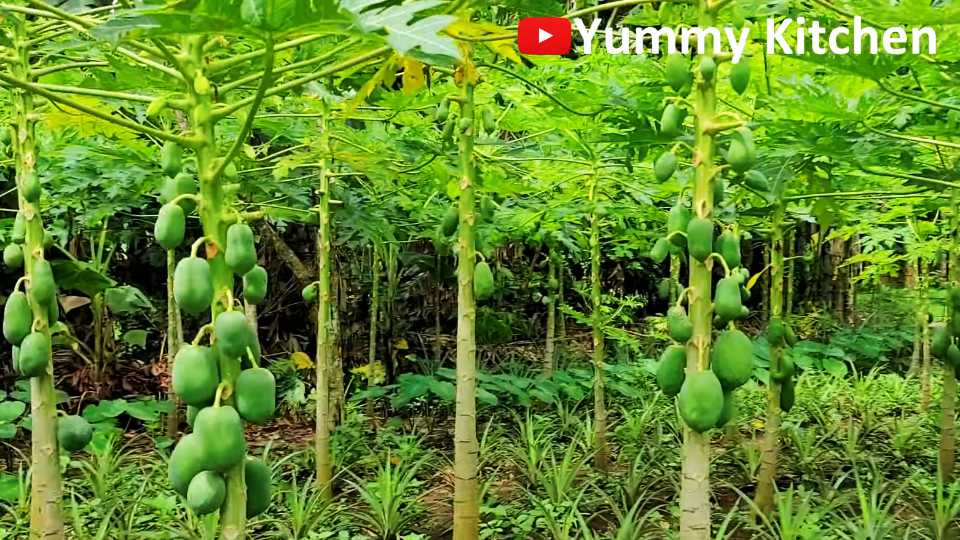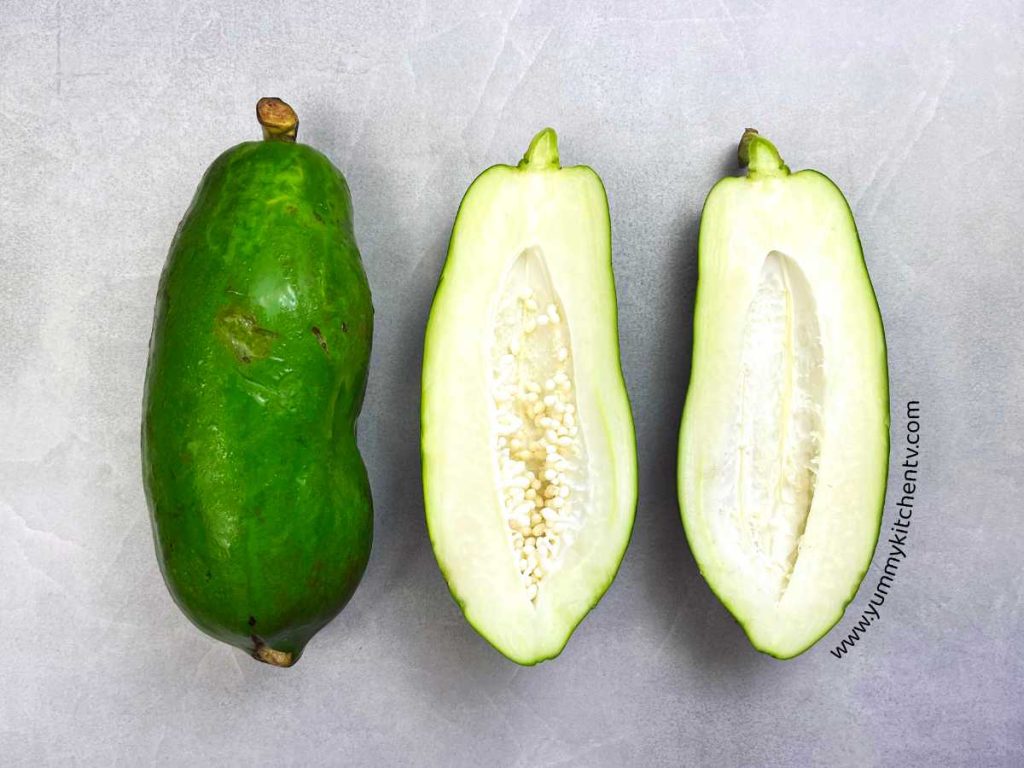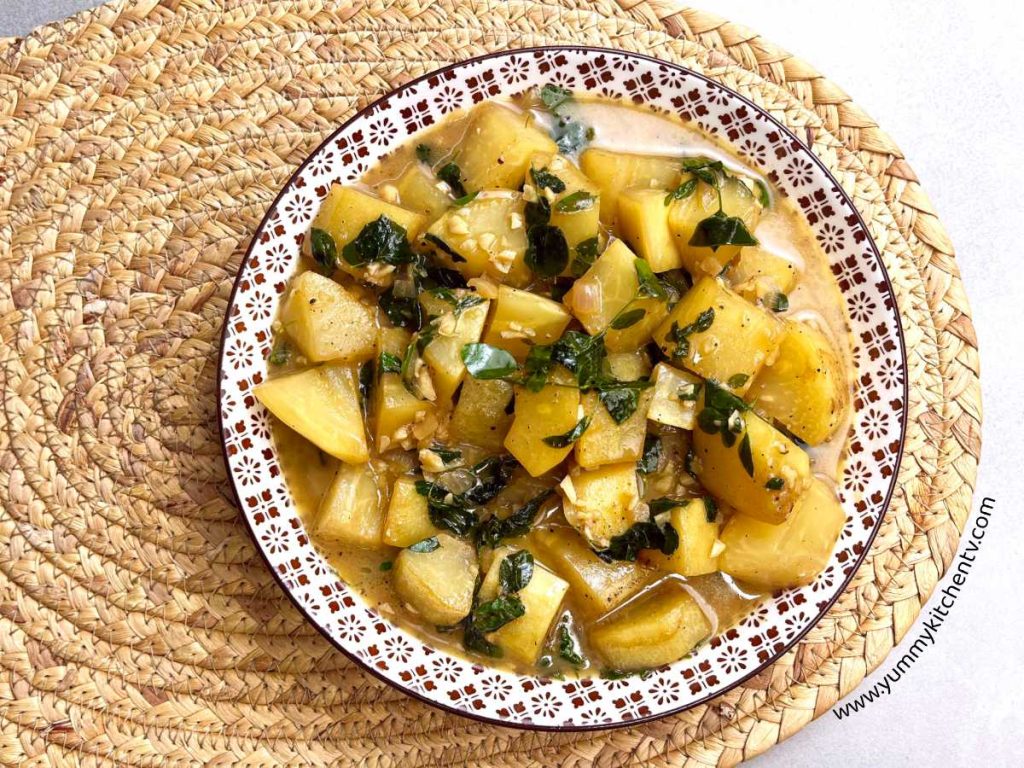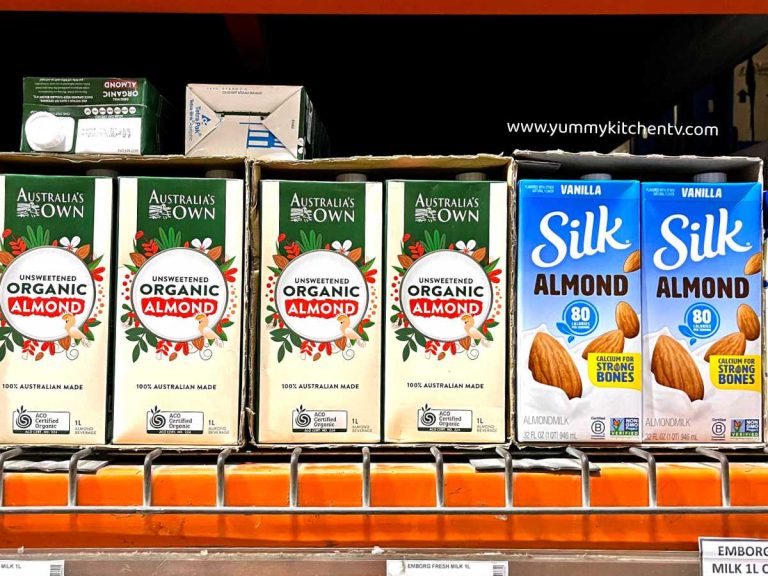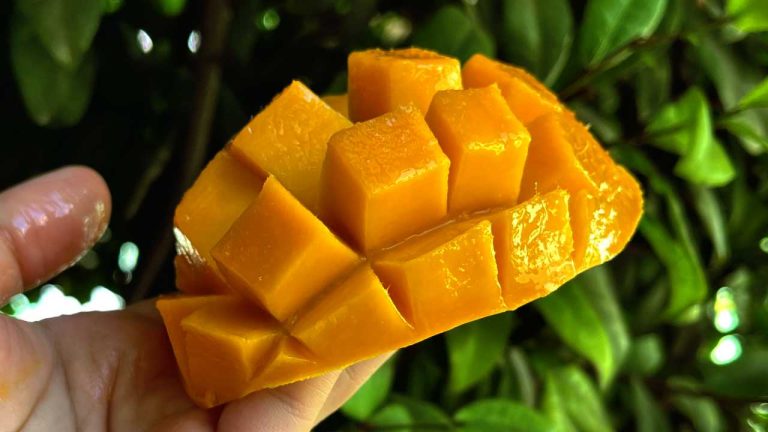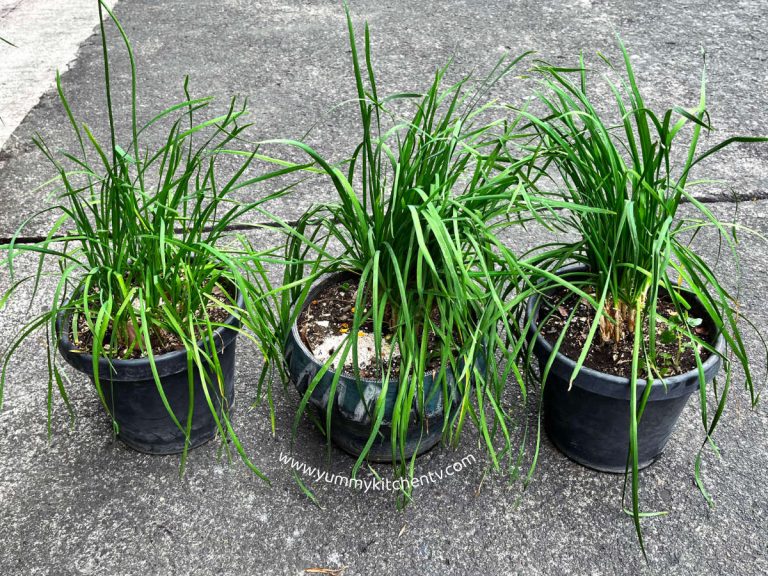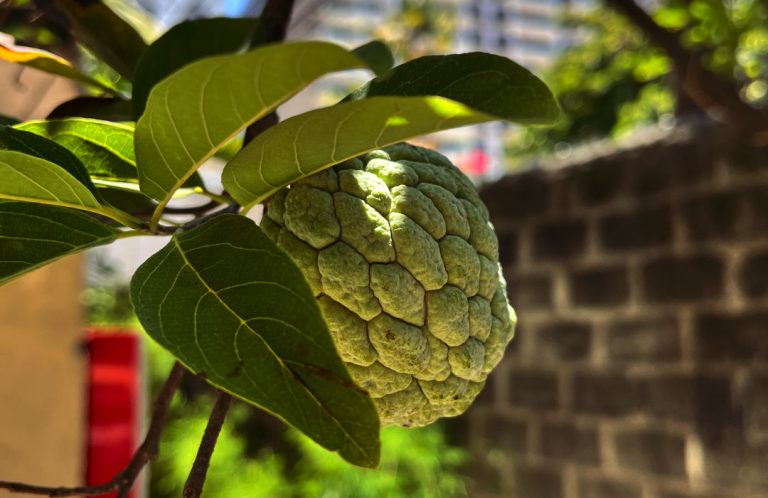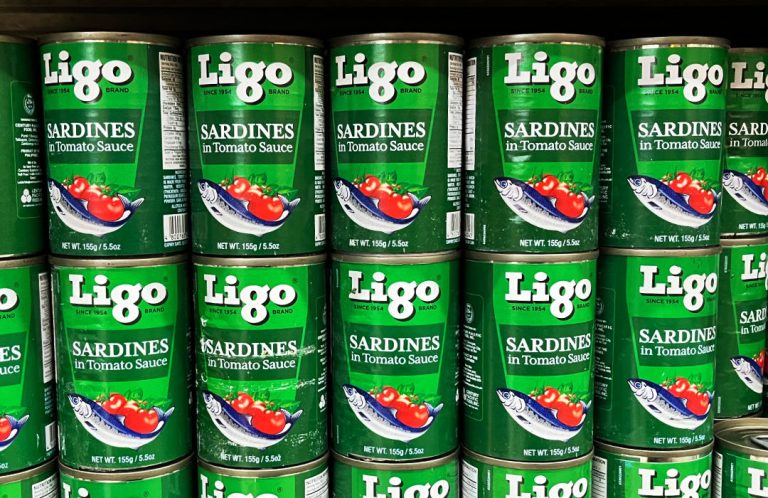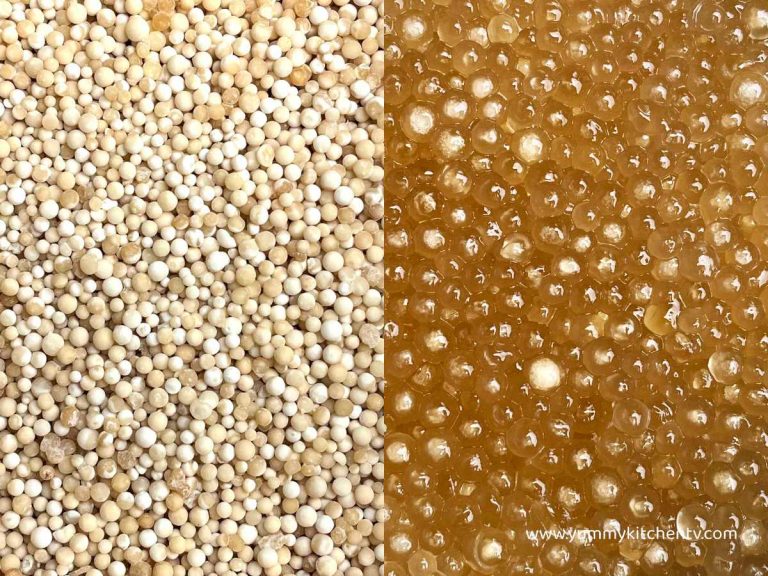Green Papaya
The Green Papaya is an unripe fruit of the typical ripened yellow-orange papaya berry that we are all familiar with. This pear-shaped dark green fruit weighs around 900 grams and has light yellow almost translucent in color flesh that is quite hard and firm. These are usually added or made into dishes that need some crunch, a mild flavored flesh that follows whatever flavor it’s added with, you can usually find them sautéed, turned into pickles, or added into salads. Read this article to find out more on how to enjoy this refreshing delicacy.
A short Introduction
The Green papaya vegetable is just the unripe version or the sweet fully ripened papaya we typically see at the fruit stands/fruit sections. Not to be confused with ‘Chayote (sayote)’ that is more like a squash in the gourd family. Green papayas have a pear-shape form with lime green to dark green skin, peeled to show the translucent lightly tinted yellow or very lightly tinted green colored flesh, with a pocket of small white or black circular seeds at the center cavity. The flesh feels very firm, almost like that of a green mango (unripe mango) that you can easily slice or grate. The seeds like the ripe papaya, while uncommon, can be eaten for its peppery and slightly tart taste. Some even use the seeds as a substitute for pepper.
Available all year round, the tropical green papaya is used more like vegetable growing on trees that reach a height of 12 feet. There are 2 types of papaya; Hawaiian papaya or Mexican papaya, each named after where it’s from, though there are also several other classifications depending on its size, color, or weight. A native to the countries from where it’s called and in Central to Southern America, these are more commonly eaten and used in Thai and Vietnamese cuisine. For more information about papayas, especially the ripe ‘fruit-berry’ , check out this article here (Papaya).
Will green papaya ripen? Yes it will. If unharvested the green papaya will grow till its larger ripe orange form that is eaten as a typical fruit raw. If harvested as a green papaya, it’s best to use it as it to see the difference in flavor and texture, but if you’d like it to turn the unripe harvested papaya into the usual papaya fruit, then cover this with a paper bag or clean paper at room temperature or fridge. This will slowly ripen after 3 days to a week depending on how ripe it was. You can buy the green papaya at groceries, supermarkets, or dry markets. And make them into Som Tum a summer-y refreshing Thai green papaya salad, curries, into ‘Achara’ a Filipino side sweet and tangy pickled side dish, or ‘Ginisang Papaya’ a warm and cozy rainy day staple dish for most Filipino households. (check out the recipes below)
Green papaya benefits
A healing unripe version of the papaya. The green papaya nutrition profile include; per 100 grams are 88 grams water, .5 protein, 11 carbohydrates, 1-2 grams fiber, with some glucose and sugars, and only 40 calories. This superfood has high levels of calcium, lycopene, potassium, Vitamins A, C, and E, Iron, antioxidants, carotenoids, and magnesium. These are all needed in the body for:
- For healthy glowing skin. The fruit has a high concentration of Vitamin C and E, plus amino acids that can give the skin glow from within and lessens age spots, wrinkles, and blemishes.
- Reduce the risks of heart disease. The high Potassium levels help relieve blood pressure keeping the body from having a stroke, heart attacks, coronary heart diseases, and atherosclerosis.
- Aids metabolism. The body needs fiber and good calories for it to have a better digestive tract. Eat these for a healthy weight loss as it keeps the stomach feeling full to keep you from snacking. It also balances the stomachs’ ph levels.
- Because it helps keep the stomach healthy, it can relieve females of menstrual pain. These are nutrient dense and can help neutralize hormone levels and inflammation.
- It also boosts the body’s immune system from all the Vitamin C it has. It stimulates white blood cell production that is the forefront for defending infections and foreign objects entering the body.
Green papaya vs papaya
- Though one in the same, the Green papaya is just the young unripe form of the regular papaya.
- Taste-wise, green papayas are cool, almost refreshing with mild to no flavor. While the ripe orange papaya is sweet.
- In texture, green papayas are firmer almost hard but still easy to manipulate and slice. While ripened papayas are soft and tender like cold butter.
Green papaya substitute
- Chayote (sayote) – or the ‘vegetable pear’ is almost the same in texture. Firm, crunchy, and refreshing in taste. The chayote is from the gourd family while the other is not. The closest replacement.
- Radish or Daikon – are the whiter option with the same texture but are quite bitter cooked raw and are better for warmer/cooked dishes.
- Cucumber – are a more refreshing and a better choice to replace papayas in salads than cooked dishes as these will soften when heated.
- Cabbage – shredded cabbage is a good choice for salads and warm food as it still gives a slight crunch and refreshing taste.
- Carrots – a sweeter and more colorful option, though might feel harder than crunchy compared to the other options.
Recipes?
The easiest way is to handle this enjoyable refreshing fruit-berry is to add them to the following:
- Thai green papaya salad – A simple green papaya recipe that just needs a few ingredients for a colorful filling summer side to the main dish. You can keep it simple or go all out with the addition of more fruits or herbs.
- Tinola – a hearty Filipino rainy day staple made with your choice of meat, typically chicken, simmered with broth or water, garlic, ginger, and some spices to warm you up. Other recipes under tinola are Tinolang itlog which is the typical tinola but made with hard boiled eggs as your protein source.
- Ginataang Manok with papaya – the creamy version of the tinola made better and slightly sweeter with coconut milk or cream and more spices.
- Ginisang papaya – stir-fry with whatever you have at home. Dash it with salt and pepper, aromatics like garlic and onions, with any leafy vegetables you have at home. You can even elevate this with a few pieces of ground meat, preserved meats like hotdogs, or canned goods.
- Achara – The Filipino Pickled Green Papaya relish, typically eaten as a side to lechon, barbeque, grilled or any fried dish to cleanse the palette of any oiliness. A helpful refreshing treat to many.




